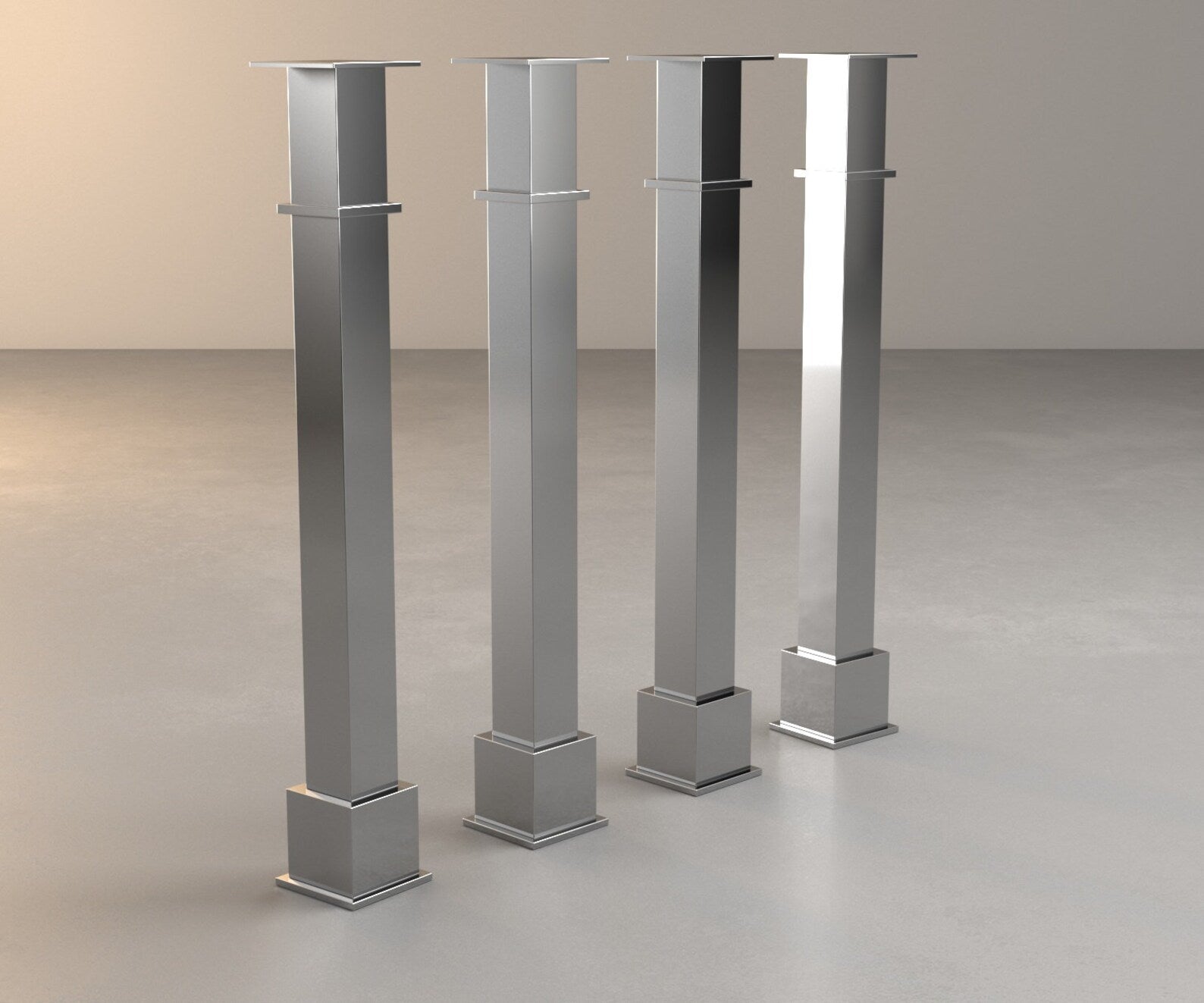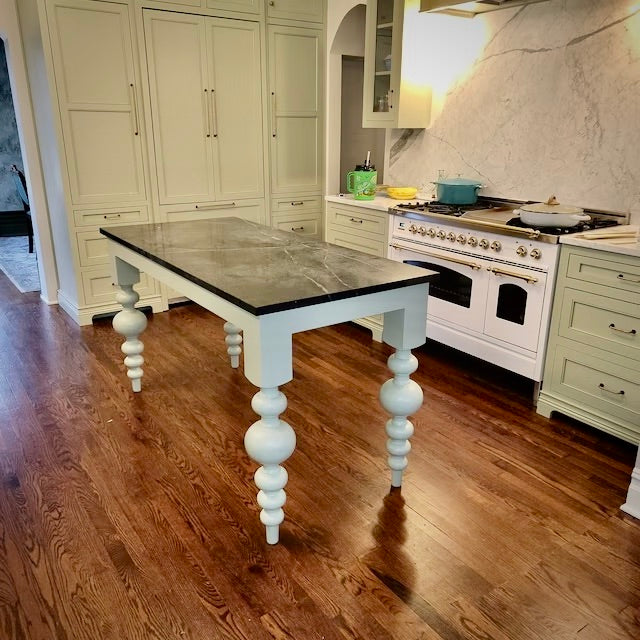Choosing the Suitable Kitchen Island Leg for Toughness and Performance
Choosing the Suitable Kitchen Island Leg for Toughness and Performance
Blog Article
The Relevance of a Sturdy Cooking Area Island Leg in Developing a Functional Cooking Location
A sturdy cooking area island leg acts as an essential part in developing a functional cooking setting, supplying necessary support for both the kitchen counter and numerous kitchen area tasks. The stability it uses can dramatically minimize the danger of accidents in high-traffic locations, while additionally adding to the total aesthetic coherence of the area. As kitchen areas evolve right into multifunctional locations for food preparation, eating, and interacting socially, the option of materials and design considerations for island legs becomes increasingly important. Recognizing these aspects can transform your kitchen into a safer and more efficient area, motivating more exploration into the very best choices offered.
Benefits of Sturdy Island Legs
Supplying vital assistance, durable kitchen island legs play an essential role in improving the functionality and sturdiness of kitchen islands - kitchen island leg. These legs not just birth the weight of the counter top and any kind of added items put on the island, however likewise add to the overall stability of the structure. A well-supported cooking area island makes certain that it stays upright and practical, even under hefty use, which is specifically vital in busy kitchen atmospheres
Additionally, strong island legs can enhance the visual appeal of the cooking area. They supply a solid structure that can complement numerous layout styles, from modern to typical. This adaptability permits house owners to personalize their kitchen islands according to personal taste while guaranteeing that the structural stability stays uncompromised.
Along with their supportive role, robust kitchen island legs can also enhance safety and security. A secure island lowers the threat of accidents triggered by tottering or tipping, which is especially important in houses with youngsters or elderly people. Solid legs can promote a seamless flow of activities, enabling for effective dish prep work and social interactions within the kitchen area. Eventually, buying strong cooking area island legs is important for a useful and visually pleasing cooking location.
Products for Kitchen Area Island Legs
When picking products for kitchen area island legs, resilience and visual charm are crucial variables to consider. One of the most common products include wood, steel, and engineered timber, each offering one-of-a-kind advantages.
Hardwood, such as cherry, oak, or maple, is a timeless choice due to its stamina and classic elegance (kitchen island leg). It can endure significant weight and is resistant to put on, making it ideal for high-use cooking area atmospheres. In addition, hardwood can be stained or repainted to complement numerous cooking area designs
Metal legs, frequently crafted from stainless-steel or wrought iron, supply a modern-day and industrial look. They are incredibly solid and can sustain significant tons while being immune to dampness and warm, which is beneficial in a cooking location. Steel legs can likewise be quickly cleaned up, enhancing their usefulness.

Layout Considerations for Stability
The choice of materials for kitchen area island legs straight influences the style considerations for security. When making a kitchen area island, it is paramount to assess the weight-bearing capacity of the chosen products. Larger materials, such as strong wood or steel, usually offer greater stability, especially under the stress of everyday use.
Furthermore, the leg style see this page should integrate proper geometry to enhance stability. A broader base enhances the support location, reducing the danger of wobbling or tipping. Consideration ought to likewise be provided to the height of the legs; disproportionate leg lengths can lead to imbalance, jeopardizing the total stability of the island.
Additionally, the circulation of weight across the island is vital. Making certain that the leg placement straightens with the heaviest components, such as kitchen counters and appliances, will certainly further enhance security.
Maintenance Tips for Durability

Depending on the product of the legs-- whether wood, steel, or composite-- suitable cleansing methods need to be used. Steel legs might need a light polish to stop corrosion and preserve their radiance.
Furthermore, tightening up bolts and screws frequently can make certain security and stop tottering. If the cooking area island experiences hefty usage, take into consideration strengthening the legs with extra brackets or sustains to improve toughness. Using a protective coating or sealer can safeguard versus dampness and stains, prolonging the life-span of the legs. By adhering to these maintenance suggestions, home owners can guarantee their kitchen area island legs stay durable and practical for several years ahead.
Choosing the Right Leg Design
Routine maintenance makes sure that kitchen island legs stay sturdy and useful, but selecting the right leg design is similarly important for both aesthetic appeals and assistance. The selection of leg design can dramatically affect the total design and consistency of your cooking area.

Functionality is one more essential element. For example, thicker legs or those with a strong base can sustain heavier kitchen counters and equipment, boosting the island's energy. Alternatively, slender legs may produce a ventilated appearance, suitable for lighter site link designs yet potentially less encouraging.
Conclusion
In recap, the value of strong kitchen area island legs can not be overemphasized in the development of a useful food preparation area. These legs give vital assistance, enhance security, and add to the total aesthetic of the kitchen. By very carefully picking appropriate materials and layouts, as well as carrying out proper maintenance methods, the durability and efficiency of cooking area islands can be made certain. Inevitably, buying durable island legs is essential to accomplishing a safe and reliable culinary environment.
A strong cooking area island leg offers as a fundamental component in developing a practical food preparation setting, supplying needed assistance for both the counter top and various kitchen tasks.Providing essential assistance, strong kitchen area island legs play an essential role in boosting the performance and sturdiness of cooking area islands. Inevitably, spending in tough cooking area island legs is necessary for a useful and visually pleasing cooking location.
Consideration must likewise be given to the height of the legs; disproportionate leg lengths can lead to discrepancy, compromising the overall stability of the island.
Wooden legs offer warmth and a traditional appearance, while steel legs offer a contemporary and industrial feel.
Report this page